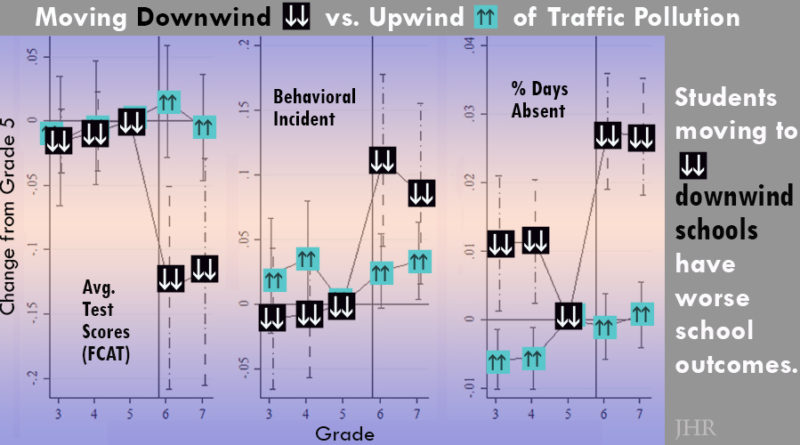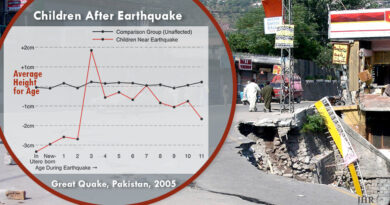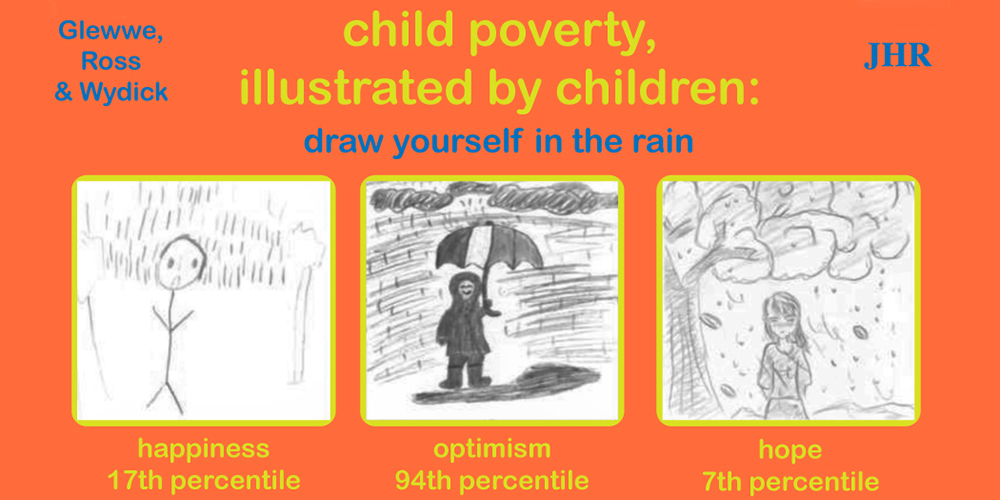When Your New School Comes with an Extra Challenge: Traffic Pollution
More than 6.4 million children attend public school within 250 meters of a major roadway, and nearly one in five schools that opened in the 2014–2015 school year was built near a busy road. Car pollution is full of polycyclic aromatic hydrocarbons, which have been linked to cognitive disabilities and asthma in children, but we don’t know a lot about how the exposure affects student performance. How does a few years of exposure during childhood vs. acute exposure during testing days affects outcomes?
Jennifer A. Heissel, Claudia Persico, and David Simon followed kids who must switch schools from elementary to middle school or middle to high school where the first school is upwind of a highway and the second school is downwind of the highway. Both schools are within 0.4 miles of the highway, but one gets more pollution because it is downwind.
Students who move from an elementary/middle school that feeds into a downwind middle/high school in the same zip code experience decreases in test scores, more behavioral incidents, and more absences, relative to those who transition to an upwind school. The team found that these effects are driven by annual exposure, rather than testing week exposure.
Are there any policy implications we can take away from this study? Persico: “Policymakers need to think about where we are building schools. Even if the land is cheap, there are large hidden costs to children’s health and development. Even within zip codes, microclimates can contribute to inequality in children’s outcomes due to school placement.”
Read the study in the Journal of Human Resources: “Does Pollution Drive Achievement? The Effect of Traffic Pollution on Academic Performance,” by Jennifer A. Heissel, Claudia Persico, and David Simon.
***
Dr. Jennifer A. Heissel (@JenniHeissel) is an assistant professor of manpower and economics at the Naval Postgraduate School. Dr. Claudia Persico (@ClaudiaLPersico) is an assistant professor in public administration and policy at American University and a research affiliate at the IZA Institute of Labor Economics. Dr. David Simon (@David_E_Simon) is an assistant professor of economics at the University of Connecticut and a faculty research fellow at the National Bureau of Economic Research.




